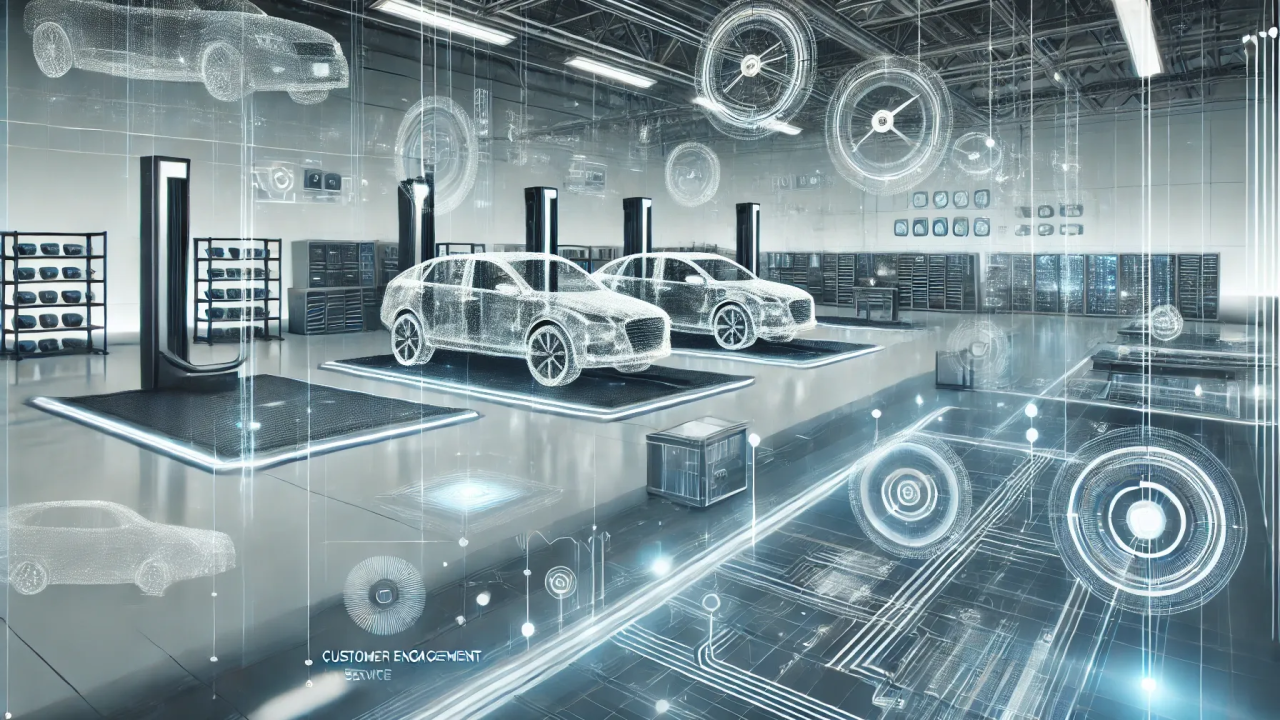
In the automobile dealership industry, the service drive is more than just a checkpoint for car maintenance; it’s a pivotal moment in shaping customer loyalty and satisfaction. Improving the service drive experience can significantly enhance customer retention, increase referrals, and boost dealership revenue. In this blog, we’ll explore three crucial ways automobile dealerships can elevate their service drive customer experience.
Technology has the power to transform the traditional service drive into a highly personalized customer journey. Implementing advanced CRM (Customer Relationship Management) systems can play a significant role. These systems should ideally be integrated with the dealership’s service database to provide service advisors with real-time access to each customer’s service history, preferences, and future needs.
For instance, a personalized greeting upon arrival using digital displays can set a welcoming tone. Service advisors equipped with tablets can access customer information instantly, reducing wait times and making the check-in process smoother and more efficient. Furthermore, dealerships can utilize data analytics to predict when a customer’s vehicle might need specific services, such as tire replacements or brake checks, based on past data and manufacturer recommendations. This proactive approach not only enhances the customer experience by making it feel bespoke but also helps in building trust and reliability.
Moreover, leveraging technology for service updates is crucial. Customers appreciate real-time updates about their vehicle’s service status. SMS texts or mobile app notifications can be used to inform customers about the progress of their car’s service, any delays, or when their vehicle is ready for pickup. This continuous loop of communication keeps the customer engaged and informed, thereby enhancing their experience and satisfaction.
Efficiency in operations is directly proportional to customer satisfaction in the service drive. Reducing wait times and increasing the speed of service are essential components of this. One effective strategy is the implementation of an online booking system that allows customers to schedule services at their convenience. This system should be intuitive and provide information on the availability of slots, estimated service time, and pricing. By managing customer expectations beforehand and allowing them to plan their visit, dealerships can significantly enhance the overall experience.
In addition, employing a dedicated service drive manager can lead to improvements in operational efficiency. This role involves monitoring service drive flow, ensuring that staff are available during peak times, and that each step of the service process — from check-in to payment — is optimized for speed and quality. Regular training sessions for service advisors can also help in enhancing their efficiency and ability to handle multiple customers proficiently.
Lean management techniques, such as the 5S system (Sort, Set in order, Shine, Standardize, Sustain), can be integrated into the service area to keep the service drive neat, organized, and efficient. This not only improves the working environment for employees but also impacts customer perceptions positively when they see a well-organized, professional service area.
The interaction with a customer shouldn’t end when they drive off; follow-up is crucial. A simple follow-up call or message asking about their service experience can make customers feel valued and open up channels for feedback. This shows that the dealership is committed to continuous improvement and values customer input, which can enhance customer loyalty and satisfaction.
Incorporating a structured feedback system through surveys immediately after the service or during the follow-up can provide valuable insights into customer satisfaction and areas of improvement. Positive feedback can be used in marketing materials and negative feedback should be addressed promptly to prevent any damage to the dealership’s reputation.
Moreover, creating a customer loyalty program that rewards customers for using the dealership’s service drive can further enhance relationships. These rewards could be in the form of discounts on future services, free car washes, or even points that can be accumulated and used towards purchases. Loyalty programs not only incentivize customers to return but also create a sense of belonging and appreciation.
Improving the service drive experience at automobile dealerships requires a balanced approach involving technology, operational efficiency, and ongoing customer engagement. By personalizing the service experience, streamlining operations, and maintaining strong after-service relationships, dealerships can significantly enhance customer satisfaction. These improvements are not just about making the service drive better; they are about building lasting relationships that drive customer loyalty and ultimately, dealership success.
